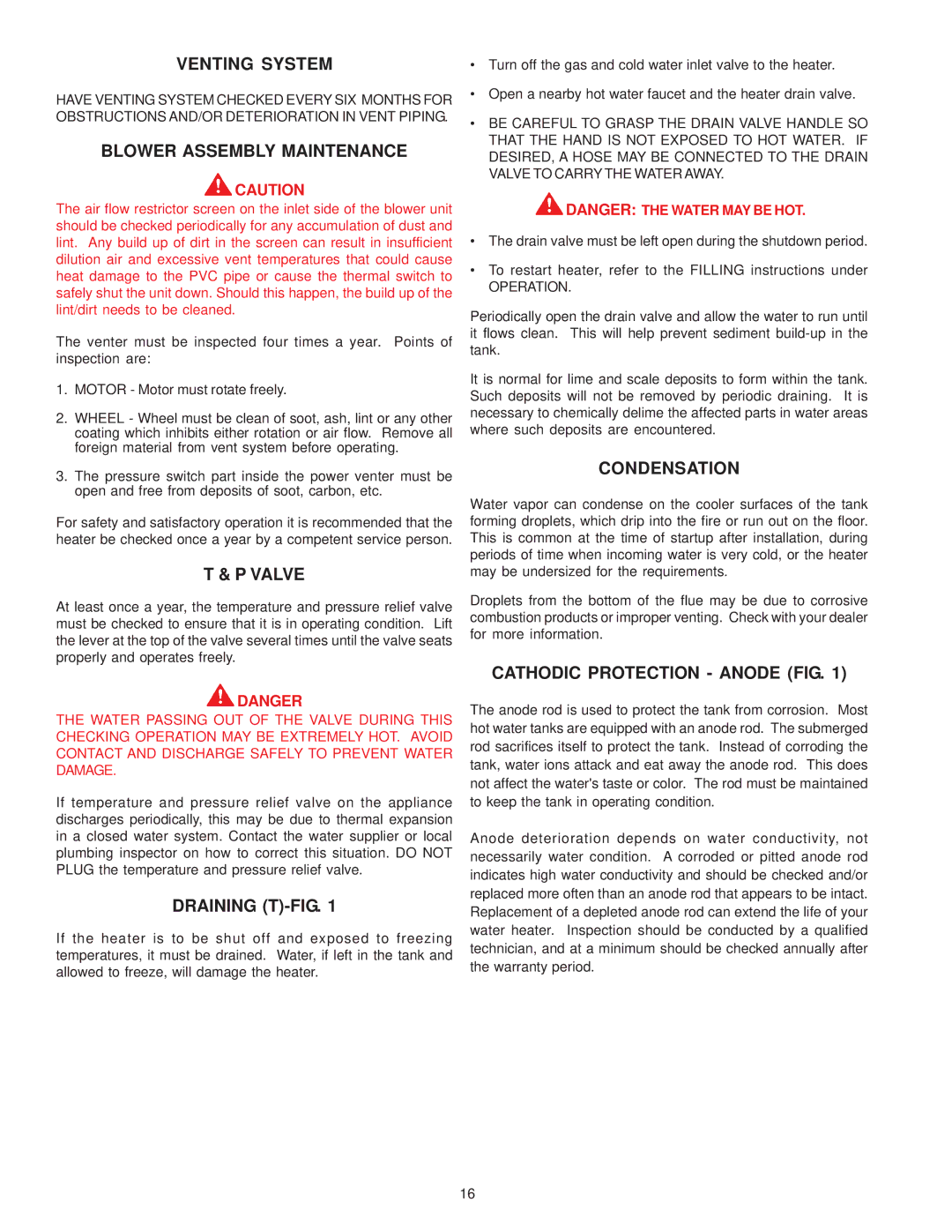GPCR, GPSH specifications
A.O. Smith has long been a leader in the water heating industry, known for its innovation and commitment to quality. Among its standout products are the GPSH and GPCR series, which exemplify advanced technology and efficiency in water heating solutions.The GPSH, or Gas Powered Storage Heater, is engineered to optimize energy usage while providing a continuous supply of hot water. This model features advanced thermostatic control, ensuring precise temperature management to meet user needs. Additionally, the GPSH boasts an impressive insulation system, reducing heat loss and resulting in improved energy efficiency. The inclusion of a high-efficiency gas burner allows for faster recovery times, meaning users can enjoy hot water on demand without extended wait times.
On the other hand, the GPCR, or Gas Powered Condensing Revolving Unit, is designed for commercial applications where high demand and energy efficiency are paramount. One of its main features is the condensing technology that recycles flue gases to enhance energy recovery. This leads to significant savings on energy bills and reduced environmental impact. The GPCR's advanced monitoring system provides real-time data on performance and efficiency, allowing for proactive maintenance and management.
Both models come equipped with A.O. Smith's proprietary safety features, including flame rollout switches and temperature and pressure relief valves, ensuring peace of mind for users. Their durable construction employs high-quality materials designed to withstand extreme operating conditions, further promoting longevity.
Installation and maintenance of both the GPSH and GPCR are straightforward, with user-friendly designs that simplify routine checks and servicing tasks. The compact nature of these units means they can fit into a variety of spaces, making them versatile options for both residential and commercial settings.
In summary, A.O. Smith's GPSH and GPCR series represent the pinnacle of water heating technology, combining efficiency, safety, and durability. With a focus on meeting the evolving demands of customers, these products are a reliable choice for anyone seeking effective solutions for their hot water needs. As the industry evolves, A.O. Smith continues to lead the way with its innovative designs and commitment to quality, ensuring users have access to the best water heating solutions available on the market.
